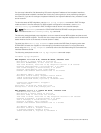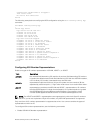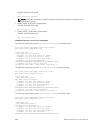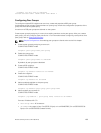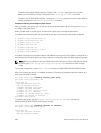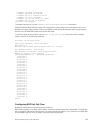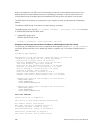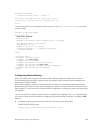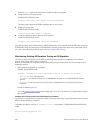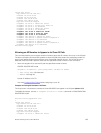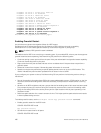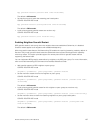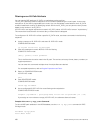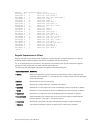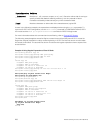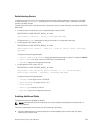
Enter the limit keyword to restrict the number of sessions accepted.
2. Assign a subnet to the peer group.
CONFIG-ROUTER-BGP mode
neighbor peer-group-name subnet subnet-number mask
The peer group responds to OPEN messages sent on this subnet.
3. Enable the peer group.
CONFIG-ROUTER-BGP mode
neighbor peer-group-name no shutdown
4. Create and specify a remote peer for BGP neighbor.
CONFIG-ROUTER-BGP mode
neighbor peer-group-name remote-as as-number
Only after the peer group responds to an OPEN message sent on the subnet does its BGP state change to
ESTABLISHED. After the peer group is ESTABLISHED, the peer group is the same as any other peer group.
For more information about peer groups, refer to Configure Peer Groups.
Maintaining Existing AS Numbers During an AS Migration
The local-as feature smooths out the BGP network migration operation and allows you to maintain
existing ASNs during a BGP network migration.
When you complete your migration, be sure to reconfigure your routers with the new information and
disable this feature.
• Allow external routes from this neighbor.
CONFIG-ROUTERBGP mode
neighbor {IP address | peer-group-name local-as as number [no prepend]
– Peer Group Name: 16 characters.
– AS-number: 0 to 65535 (2-Byte) or 1 to 4294967295 (4-Byte) or 0.1 to 65535.65535 (Dotted
format).
– No Prepend: specifies that local AS values are not prepended to announcements from the
neighbor.
Format: IP Address: A.B.C.D.
You must Configure Peer Groups before assigning it to an AS. This feature is not supported on passive
peer groups.
Example of the Verifying that Local AS Numbering is Disabled
The first line in bold shows the actual AS number. The second two lines in bold show the local AS number
(6500) maintained during migration.
To disable this feature, use the no neighbor local-as command in CONFIGURATION ROUTER BGP
mode.
R2(conf-router_bgp)#show conf
!
194
Border Gateway Protocol IPv4 (BGPv4)



